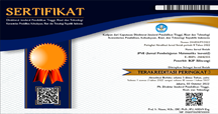IDENTIFIKASI KEMAMPUAN SISWA SMP DALAM MENJELASKAN IDE MATEMATIS DENGAN GAMBAR DAN ALJABAR BERDASARKAN TEORI MASON, BURTON, DAN STACEY
DOI:
https://doi.org/10.22460/jpmi.v4i1.p%25pKeywords:
Mathematical Ideas, Mason, Burton, and Stacey TheoryAbstract
References
Agustin, N. A., Mirayanti, M., & Zanthy, L. S. (2019). Analisis Kemampuan Komunikasi Dan Kemampuan Berpikir Kreatif Matematis Melalui Tugas Problem Posing Serta Pengaruhnya Terhadap Self Confidence Siswa Smp. JPMI (Jurnal Pembelajaran Matematika Inovatif), 2(2), 65–76. https://doi.org/10.22460/jpmi.v2i2.p65-76
Dila, O. R., . M., & Zanthy, L. S. (2019). Analisis Kemampuan Berpikir Kreatif Matematis Siswa Tentang Materi Peluang. JPMI (Jurnal Pembelajaran Matematika Inovatif), 2(4), 155–160. https://doi.org/10.22460/jpmi.v2i4.p155-160
Farib, P. M., Ikhsan, M., & Subianto, M. (2019). Proses berpikir kritis matematis siswa sekolah menengah pertama melalui discovery learning. Jurnal Riset Pendidikan Matematika, 6(1), 99–117. https://doi.org/10.21831/jrpm.v6i1.21396
Mason, J., Burton, L., & Stacey, K. (2010). Thinking Mathematically. In Pearson Education Limited. https://doi.org/10.12968/eyed.2013.15.2.18
Peraturan Menteri Pendidikan dan Kebudayaan Nomor 58 Tahun 2014 Tentang Kurikulum 2013 SMP, (2014).
Peraturan Menteri Pendidikan Nasional Nomor 22 Tahun 2006 Tentang Standar Isi, (2006).
Permata, C. P., Kartono, & Sunarmi. (2015). Analisis kemampuan komunikasi matematis siswa kelas VIII SMP pada model pembelajaran TSTS dengan pendekatan scientific. Unnes Journal of Mathematics Education., 4(2), 127–133. https://doi.org/10.15294/ujme.v4i2.7452
Primasatya, N. (2016). Analisis kemampuan berpikir matematis calon guru sekolah dasar dalam menyelesaikan masalah matematika. Jurnal Pendidikan Matematika, 2(1), 50–57. https://doi.org/10.33474/jpm.v2i1.206
Ramadhan, I., & Minarti, E. D. (2018). Kajian kemampuan komunikasi matematik siswa SMP dalam menyelesaikan soal lingkaran lingkaran. Journal of Medives : Journal of Mathematics Education IKIP Veteran Semarang, 2(2), 151–161.

















